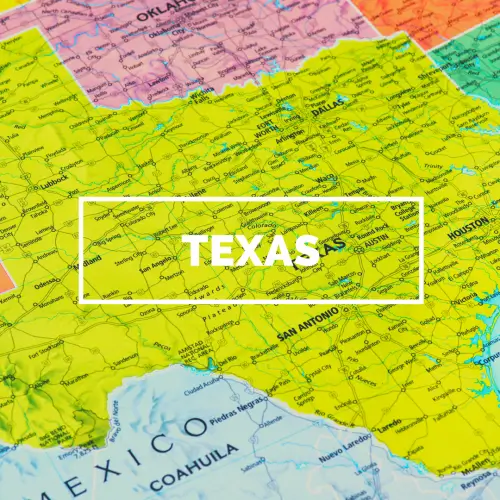The Importance of a Bill of Lading

Lila Claybourne
Jul 22, 2022

What is the BOL Document?
If you’re an experienced car mover, you’ve probably heard about the Bill of Lading, or the “BOL”. This is basically one of the most important documents during car transport, since it practically states that your vehicle will be transported between two different locations by an auto transport service.
In case you’re a first time mover or you simply want to get a clearer understanding of what the Bill of Lading is, we’ll discuss it more deeply along the reading. This will eventually help you have a better experience and comprehension of your next vehicle shipping process.
What is exactly the Bill of Lading?
The BOL, is a document of title that specifies the two shipping locations (pickup and delivery) of the vehicle by the auto transport company. It also works for other types of cargo shipping among common carriers as a mode of transport.
The bill of lading is considered as the official contract issued by the carrier and the vehicle owner. The document includes the entire terms of the agreement, dates, company policies, among other detailed features about the carrier and the car owner.
The straight bill of lading is signed when the user receives the goods and has been paid prior to the shipment. Therefore, treatment is considered as a non-negotiable document.
Main Purposes of the BOL
As mentioned above, the bill of lading has one main purpose. However, there are certain functions it also accomplishes in order to make a successful and reliable delivery of freight and goods.
It’s a legally binding document of title, which allows sale of different goods in transit and raising of financial credit.
It’s a main piece of evidence for the carriage contract establishing terms and conditions for the delivery of the goods that will be carried out and transported.
It’s also seen and identified as a receipt of the cargo the carrier has received and will be delivering ensuring good conditions, schedule accomplishment, among other key elements.
Main Types of Bill of Lading Document
The bill of lading includes four types of document. Each of them are issued for different shipping purposes and methods.
Inland BOL
Ocean BOL
Through BOL
Air Waybill BOL
The inland Bill of Lading is issued by the carrier for shipments of land. The ocean Bill of Lading, is issued for shipments across the seas. That said, shipments that have to be transported to the port by a truck and then shipped overseas, required both types of Bill of Lading.
The through BOL is created for international trade transports, exactly for shipments to other countries. The Air Waybill BOL, is specified for transported aircraft items.
The Document Procedure
Pickup:
During the pickup procedure, the trucker will identify the pre-existing damages of the vehicle in the document, and record the mileage of the car on the odometer. You’ll be recommended to take pictures of your vehicle prior to the shipment.
After that, you’ll both be signing the contract of carriage after reading the terms of the bill of lading.
Delivery:
At delivery, you and the trucker will inspect the vehicle carefully again. In case you see any new damages, you’ll have to order your bill of lading document and mark all the new scratches, dents, or new imperfections on your car.
Right after the inspection is carefully completed, you and the driver will again sign the legally binding document, and each of you will keep a copy of it.
If you have any additional questions, claims or concerns with your driver about your vehicle, don’t hesitate to call your auto transport company. At AmeriFreight, we are available for you via phone call or text. We will solve your inquiries right away.
Original Bill of Lading Structure
Check how the document’s structure is designed and shown to you prior and at the end of your vehicle’s shipment.
Header
Company name, order number and date.
Pickup and delivery information
Your pickup and delivery addresses will be shown here.
Car details
Your vehicle’s make, model, year, color, license plate number, current mileage, VIN, weight, and any other extra information will be located carefully so the document states clearly that this vehicle belongs to you.
Vehicle’s conditions
Your vehicle’s conditions are important, since they will state that your car was delivered successfully without any type of damage along the road. In case there are any unexpected damages, the document will state this clearly and it will be easier for you to make a deal or ask for a refund with your trucker or your shipping company.
A vehicle inspection is important, since it will help you identify details such as:
- Dings
- Scratches
- Dent
- Major damage
Terms and Conditions
Read them carefully and take note of any detail or mention you’re don't agree with. Company policies vary, so it's important for you to understand clearly the terms of the bill of lading prior to shipment.
Signatures
This is the last step in the process, and the document will be signed by you and your driver. This will be requested at both pickup and delivery.
Remember that if you don’t agree with something mentioned on it, talk to your driver or customer service agent for any questions or concerns.
Right after you sign the legally binding document, your vehicle will be loaded into the carrier or officially delivered to you.
Negotiating the BOL
There are two types of bill of lading that allow you to negotiate or not negotiate it, based on several factors.
Non-negotiable bill of lading: This type of BOL states a shipment of goods will be done between a specific consignee/name of the receiver and the carrier/shipper. Under this type of document, the receiver or buyer can claim the goods only by confirming their identity.
Negotiable bill of lading: Under this type of document, the delivery is done to anyone having possession of the original bill of lading, without necessarily having to be the person or consignee named in the document. This type of bill allows the buyer or receiver to present an original copy of the BOL at the unloading point or port. The original bill of lading is the most important element under this process, since without it, the freight will not be released.
BOL During Method of Operation
There are also different types of bills of lading during the carrier operation. These types are considered for one specific purpose, depending on the transport situation, shipper, conditions and type of contract. Let’s see some of them and how they are related to each transportation operational method.
Received for shipment: This type of BOL ensures that the carrier received the goods, and is sent from agent to shipper.
Clean bill of lading: This one states that the cargo of the BOL has been loaded on board in good order and condition.
Soiled bill of lading: The document reflects that the goods were received by the carrier in perfect conditions.
Shipped bill of lading: The document is issued when the cargo is loaded into the carrier, and is a legally binding document between the shipper and the shipowner.
Combined transport bill of lading: Through these, the bill gives information about the cargo being transported through different systems: sea and land. Both sea and land containers produce a multi-model transport that is considered as a combined type of shipment, also known as combined bill of lading.
Dirty bill of lading: In case the shipowner has an objection about the condition of its goods during cargo, the person can use a claused or dirty BOL in order to include a statement about his/her objection. Some of these common conditions are broken cargo, shortage, or torn packing.
What about electronic bills of lading?
Technology has adapted a new way of generating the document into electronic copies that can be transmitted between the carrier and the owner. Modernisation has made the industry adapt to new forms of transportation and implementation processes during shipments, leading to easier processes among both parts of the transportation process.
The electronic bill of lading is also considered as a way of preventing the following issues that may occur with a printed bill of lading:
Since carriers are obligated to have the original bill of lading in their hands in order to release the goods, sometimes the document tends to take more time to be delivered to them, producing delays in the process.
The printed bill of lading is at risk of being a fake document or fraud, which leads to a huge loss of the carrier procedure and delivery of goods.
The paper tends to move slowly from hand to hand, signature process, to name a few, which delays the entire process as well.
Is the bill of lading checked by authorities during transit?
Since highway patrols currently check loads of trucks at different weight stations across the roads, they will also check for the bills of lading of each freight. Therefore, the trucker has to have an organized file of each corresponding bill of lading of the goods that are being shipped.
During auto transport, truckers also own an original bill of lading for each vehicle. If there is no document for a vehicle that is being transported, this will be considered as an infringement, and highway patrols will be allowed to take appropriate actions over this.
Using The Correct BOL is Key During Shipment
There are multiple types of BOL, therefore, it's important to know the difference between each of them in order to use them correctly during each type of shipment.
In case you use the incorrect BOL for a shipment, your delivery services might be affected and the whole transportation process will be delayed as well. However, you must contact your carrier or broker as soon as possible to see how they can correct the mistake. You may be required to fill a letter of authorization involving both parts of the shipment, in order to generate the right BOL for the whole process.
Freight Shipping
The BOL is one of the most important documents for freight shipping. However, there are also a lot of other terms and aspects to learn about the world of shipping and logistics. Getting to know the details of truckload shipping, freight quoting, among others, will help you get a clearer vision of how the freight shipping industry works and its importance in today’s world.
Related Posts
















